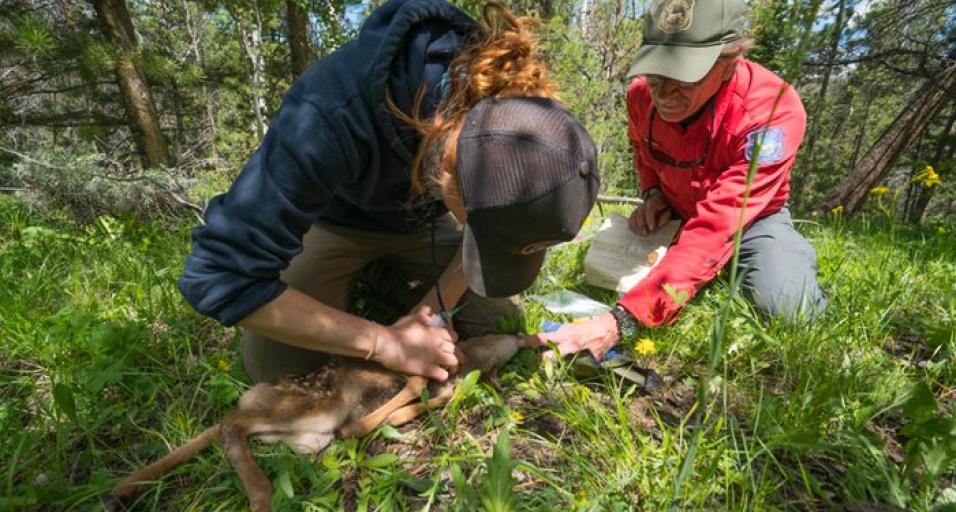Biologists at the Wyoming Game and Fish Department know a significant amount of information about mule deer and what impacts their overall success from decades of research and data collection. Through their research they are well aware weather, habitat and chronic wasting disease affect Wyoming’s mule deer populations. These environmental factors play a significant role in the population fluctuation of mule deer. But in the last 30 years, mule deer populations have declined to a point that is worrisome to wildlife managers and the public.
Even with the bulk of information on mule deer and tested management strategies, there are no quick fixes for the decline in mule deer populations. However, biologists at Game and Fish believe new tools and technologies could offer more robust data to inform the management and prosperity of mule deer.
Enter the groundbreaking Mule Deer Monitoring Project.
The project seeks to collect more information on mule deer than ever before — and interpret that data faster and in a more immediate, usable way. The 5-year project looks at six areas considered critical for mule deer management: abundance, composition, data management, survival, herd health and harvest management.
A main component of the monitoring project is to inform one of the most rooted and important questions for mule deer managers — how many individuals are there in a herd? Understanding abundance, as the study terms it, is the cornerstone of management. To increase abundance data, Game and Fish plans to increase surveys significantly, scaling up from surveying one herd a year to eight.
For much of the other components of the project, wildlife managers are narrowing in on five local herds, some of which have never been intensely studied. Those focal herds are the Laramie Mountains, North Bighorn, Sweetwater, Upper Shoshone and Wyoming Range.
The monitoring project also will look closely at the composition of the focal herds. Composition means the number of male, female and juvenile deer in the herd. This will be done through aerial counts, trail cameras and ground surveys.
A large amount of data in the project will come from 1,000 collared mule deer. The data will be key to learning about the day-to-day lives of these animals. With this data Game and Fish will be able to see where the deer go and where they stay, what habitat they use and where they avoid, giving biologists the opportunity to dig into the why. Additionally, collar data will help measure herd performance, assess causes of mortality, evaluate harvest strategies, update seasonal range maps and more.
The processing of the massive amount of data will be obtainable through a partnership with the University of Wyoming. Researchers from the university will take the immense volume of data, analyze it and return it to the department.
Game and Fish and partners will hit the ground running in late November. The first task will be deploying collars and then beginning intensive surveys. The data will start rolling into biologists’ email inboxes soon after. Throughout the year Game and Fish plans to update the public quarterly on what they are learning.
This story, written by Wyoming Game and Fish Department staff, originally appeared in the Oct. 2022 issue of Wyoming Wildlife magazine. To read the entire feature please visit the magazine’s webpage.
Game and Fish launches 5-year mule deer monitoring project
Breanna Ball, statewide information specialist - (breanna.ball1@wyo.gov)



